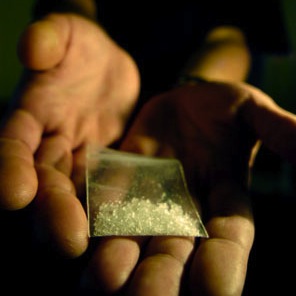Table of Contents
Running a marathon, eating spicy food or laughing at a really good joke could all cause the brain to release an intoxicating mix of pleasurable chemicals. When the brain is flooded with these signals, the person might feel happy, goofy or just plain great. It’s called euphoria, and it’s relatively easy to reach this state without using or abusing any kind of substance at all. Unfortunately, many people feel as though they simply must reach for a pill bottle in order to experience bliss, and they may fear that law enforcement officials will stand in the way of their lasting happiness. Users who want happiness without the hassle may lean on so-called “legal” drugs of abuse, allowing them to find pleasure in a pill without looking over their shoulders for flashing lights in red and blue. Kratom may be appealing to these users, and those who experiment may face serious consequences with each dose they take in.
Forms of Use
 Kratom is typically sold in a powdered format in the United States. Users can sprinkle this green substance into teas or juice drinks, and slurp down their drug without doing any kind of formal preparation at all. Some Kratom users also buy whole leaves, which they can chew on or smoke. Within minutes, the drug attaches to receptors inside the brain and triggers a series of chemical reactions. At low doses, the user might just feel a bit sped up and alert. Those who take high doses, however, might feel sedated and calm, and they might experience euphoria.
Kratom is typically sold in a powdered format in the United States. Users can sprinkle this green substance into teas or juice drinks, and slurp down their drug without doing any kind of formal preparation at all. Some Kratom users also buy whole leaves, which they can chew on or smoke. Within minutes, the drug attaches to receptors inside the brain and triggers a series of chemical reactions. At low doses, the user might just feel a bit sped up and alert. Those who take high doses, however, might feel sedated and calm, and they might experience euphoria.
While ancient cultures have used Kratom for decades, it hasn’t been a popular drug of abuse in Western cultures in the recent past. As a result, very few studies have been conducted concerning how the drug functions inside the human body, and how people who take this drug feel on a regular basis. As a result, it’s very difficult to detail how the drug really works and what it can do. The anecdotal evidence suggests, however, that this drug does have the capacity to cause harm, and that people who take this drug might be experimenting with things that could cause long-term damage.
Contamination and Quality Control
Even though Kratom is a legal drug and the manufacturers aren’t required to do their work in clandestine laboratories, they’re also not required to discuss their work with outsiders, or submit samples to testing authorities for safety or purity. As a result, it’s not uncommon for manufacturers to sell a product they claim is Kratom, when the product might be made of any substance at all. For example, in a study in the Journal of Natural Medicine, researchers examined products sold as Kratom in Japan. Here, they found that while some of the products did contain Kratom, many of the others contained materials from plants that were similar, but that couldn’t be definitively called Kratom. In other words, some consumers got the product they expected while others did not. It’s possible that some of these other people had poor experiences, as they weren’t taking the drug they expected.
- Caffeine
- Cocaine
- Chocolate
- Methamphetamine
- Marijuana
These additives could be dangerous for some people, as they could interact with medications they’re already taking. The additives could also be responsible for delivering a terrible trip, even when previous doses didn’t provide responses that were severe in nature.
Hallucinations and Psychosis
 Some people experience hallucinations and psychosis while taking Kratom, according to the United States Drug Enforcement Administration (DEA). These people might also be quite aggressive, and they seem to be filled with the sensation of power and invincibility. It’s a dangerous combination, as people like this might see things that don’t exist, and they might be motivated to fight these hidden invaders with any weapons they can find in the vicinity. These are the same sorts of symptoms that led some writers to link Kratom with the now-illicit drug known as “bath salts.” One writer at Forbes, for example, wrote an article about the drug, asking whether Kratom should be considered the “new” bath salt equivalent.
Some people experience hallucinations and psychosis while taking Kratom, according to the United States Drug Enforcement Administration (DEA). These people might also be quite aggressive, and they seem to be filled with the sensation of power and invincibility. It’s a dangerous combination, as people like this might see things that don’t exist, and they might be motivated to fight these hidden invaders with any weapons they can find in the vicinity. These are the same sorts of symptoms that led some writers to link Kratom with the now-illicit drug known as “bath salts.” One writer at Forbes, for example, wrote an article about the drug, asking whether Kratom should be considered the “new” bath salt equivalent.
At the moment, these comparisons don’t seem helpful. Much more research must be done on both substances before experts can outline how they work and why they may or may not be dangerous. Additionally, while the effects of bath salts don’t seem to be overly dependent upon dose, meaning that people who take just a little might have as much trouble as people who take a lot, the effects of Kratom might be much more dependent on dose. Since the drugs are so very different, comparing them might not be helpful at all.
Addictive Levels
Proponents of Kratom use are fond of claiming that the drug isn’t any more addictive than coffee, and that anyone who uses this drug can quit with just a modicum of willpower and a willingness to do something else for a day or two. Unfortunately, the DEA doesn’t seem to agree, and their fact sheet on Kratom mentions that the drug is addictive in two separate places. While the reasons for addiction aren’t clear, there are some theories about why users might become addicted to a substance like this.
In a study in the journal Clinical Toxicology, researchers suggest that Kratom attaches to the same receptors used by opioid medications like morphine. In part, the drug is an agonist, meaning that it can counteract the effects of opiate drugs. But the researchers also note that a very tiny part of Kratom appears to be more potent than morphine. This seems to suggest that Kratom can block some chemical reactions, but it can also cause some reactions of its own. And, if the drug attaches to the same receptors used by opiates, perhaps people who take Kratom might walk down the same path to addiction followed by people who take opiates.
A brain that’s consistently exposed to drugs of abuse amends chemical processes and otherwise adjusts to the drug of abuse. In time, this modified brain may not function well without access to drugs. Strong cravings for drugs can kick in, drawing people to use even when their rational minds would rather stay sober. If people don’t respond to these cues and they attempt to stay sober, withdrawal symptoms can begin.
- Hostility
- Mood swings
- Aggression
- Aching, twitching muscles
- Running nose
These symptoms of withdrawal, and the cravings for Kratom, can keep people locked into addictive patterns for years or even decades. Their bodies have been primed for Kratom use, and they may just know of no other way to live.
Significant and Controversial Consequences
 Proponents of Kratom also report that the drug hasn’t been associated with any serious cases of medical damage. While it may be true that large-scale studies on the safety profile of the drug haven’t yet been performed, there are a few small studies and news reports on the drug that seem to indicate that it has the capacity to cause serious medical harm.
Proponents of Kratom also report that the drug hasn’t been associated with any serious cases of medical damage. While it may be true that large-scale studies on the safety profile of the drug haven’t yet been performed, there are a few small studies and news reports on the drug that seem to indicate that it has the capacity to cause serious medical harm.
In Longview, Washington, for example, a young mother was found dead in her home. When she was found, she was surrounded by foil packets that were once filled with Kratom, news agencies report. The toxicology report on this young person could take months to complete, and the authorities readily admit that the woman likely had other medical conditions that played a role, but the Kratom is considered an important part of the puzzle, and it’s quite possible that the drug caused a series of reactions that led to this woman’s very unfortunate death.
A study in the Journal of Forensic Sciences details yet another case of death that might be attributed to Kratom. Here, a 17-year-old man died after taking Kratom, and his cause of death was listed as a “possible Kratom toxicity.” The researchers examined the man’s autopsy report and medical history, and while they report that some other medical condition could have caused the man’s death, there’s no reason to assume that it couldn’t be attributed to a very high dose of Kratom. The man was in good health, and nothing else in his autopsy could explain why he had died. This study seems to suggest that Kratom was to blame in this specific death.
As the drug becomes more popular and more people choose to take it, death reports very well may rise. If the drug works on the same receptors as opiates and it functions in the body much like an opiate, it’s all too easy for people to take too much and overwhelm the vital functions of the body. Opiate users face this risk each day, and it seems like Kratom users might do the same.
Customized Treatment
 At the moment, there isn’t a clear-cut protocol for treating Kratom abuse. Some people need the help of medications to get through withdrawal, for example, while others seem capable of working through the process on their own without using any drugs at all. Most people who are using Kratom compulsively do need the help of therapy, however, as they may not be able to stop their use on their own. Even if they can get sober, they may slip back into bad habits unless they develop a new way of thinking about the world and their responses to the stresses of life.
At the moment, there isn’t a clear-cut protocol for treating Kratom abuse. Some people need the help of medications to get through withdrawal, for example, while others seem capable of working through the process on their own without using any drugs at all. Most people who are using Kratom compulsively do need the help of therapy, however, as they may not be able to stop their use on their own. Even if they can get sober, they may slip back into bad habits unless they develop a new way of thinking about the world and their responses to the stresses of life.
At Axis, we’d like to help. Our residential treatment program provides comprehensive service for almost any addiction, and our all-inclusive treatment programs are reasonably priced. We even work with most insurance plans. Please call us to find out more about how we can help you overcome your addiction.


